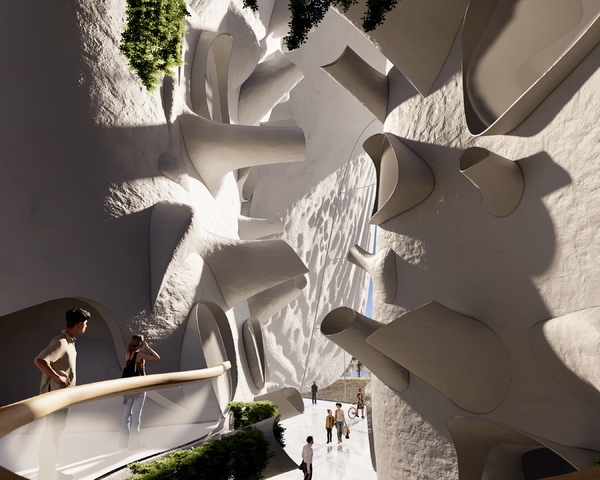Healing Psychosis City
The risk of developing psychosis – a severe psychiatric disorder associated with hallucinations, delusions, paranoia and disorganised thoughts – is 77% higher in urban than rural dwellers, this a concerning statistic taking into account that In the UK, after several decades of rural-to-urban migration, 83% of people live in urban environments. Over half of the world’s population (4.2 billion people) live in cities with this number expected to rise, with 68% of the global population estimated to live in urban areas by 2050, making the link between urban environments and psychosis a stark one.
Due to the recent COVID pandemic and the detrimental effects it has had on mental health, cases of ‘first suspected episodes of psychosis’ in the UK have seen sharp rises in the past few years making it more relevant than ever. Studies have also found that the longer you spend in an urban environment during childhood and adolescence, the higher your risk of developing mental illnesses such as schizophrenia in adulthood. ‘This “dose-response” association provides indirect support for a causal relationship between urban living and mental illness.’
The project starts off as a critique against the existing Abito apartment complex located in Clippers Quay, Salford as a form of urban Architecture that fosters and encourages the development of psychosis; doing so in the form of a 'dystopian remodel' of the clippers quay area whereby I extrapolated the detrimental characteristics of urban living into 'psychosis city'. The end result was a redesign of the complex, with reference to the existing, In a way that aimed to be the antithesis of psychosis city, one which is designed to mitigate the detrimental effects that the urban environment has on the development of psychosis.
The end result was a radical, organic apartment complex housing 100 studio apartments. The unique, free-flowing design was produced via research conducted in ST1 and ST2 through the use of a wide range of creative methodologies, some of which looked to investigate the expression of fabric as an Architectural material. Much of the research carried out took a sensitive approach by analysing the condition of psychosis itself as well as actors suffering from the condition.


